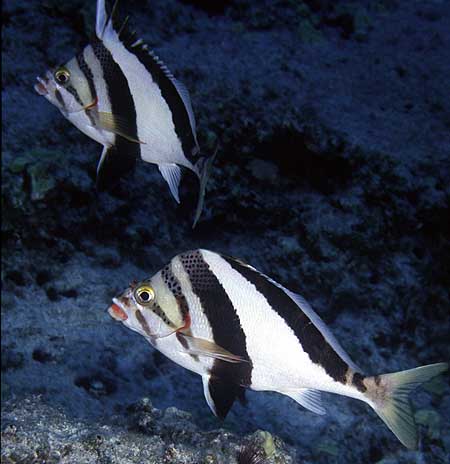|
hawaiisfishes.com
|
|
Home |
Fishes | Invertebrates |
Books | CDs
| Links |
Contact |
|
past
fishes of the month
HAWAIIAN MORWONG
|
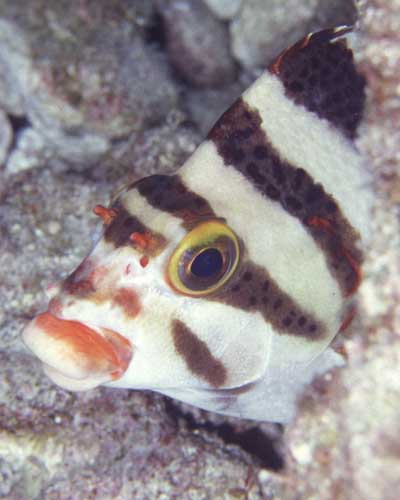 Hawaiian Morwong - Midway Atoll. 30 ft. |
| MORWONGS
(Family Latridae) Morwongs are an unusual and sometimes comical-looking group of fishes found in subtropical and warm temperate seas. Their high, laterally compressed bodies are typically marked with bold black diagonal bands and their small mouths have thick fleshy lips. Bony knobs often protrude in front of the eyes. Morwongs are related to hawkfishes, and, like hawkfishes, many species have thickened pectoral fins which allow them to sit upright on the substrate. They typically feed on small crustaceans and other invertebrates found in sand. Occurring from South Africa to the Pacific coasts of Peru and Chile, morwongs attain their greatest diversity in the cool waters off southern Australia (hence the distinctive aboriginal name). Above the equator they occur in Japan, Korea, China, and, of course, Hawai`i. This type of distribution, known as "anti-tropical," is characteristic of a number of Hawai`i's fishes. Although morwongs were formerly placed in their own family Cheilodactylidae, ichthyologists have recently combined them with the trumpeters (a small group of exclusively south Australian fishes) into the single family Latridae. During this shakeup, they changed some genus names as well, including that of our Hawaiian species, which used to be Cheilodactylus vittatus. |
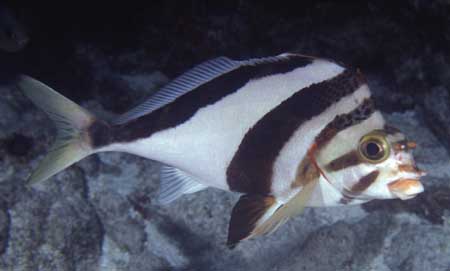 Hawaiian Morwong - Midway Atoll. 30 ft. |
|
HAWAIIAN MORWONG
· kikakapu |
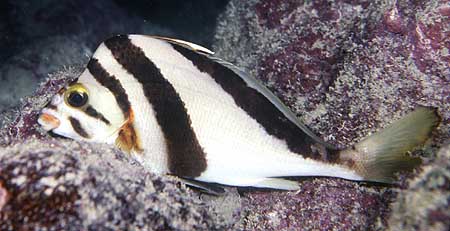 |
| Here are two of the very few Hawaiian Morwongs I have seen in the main Hawaiian Islands.The one above was at snorkeling depth inside the reef at Hanauma Bay, sitting under ledge in the area known as "Sandman's Patch." It stayed in the vicinity for a few weeks and then disappeared. Below is a cute baby about 3 in. long, seen in about 3 ft. of water at Lydgate State Park, Kaua`i. |
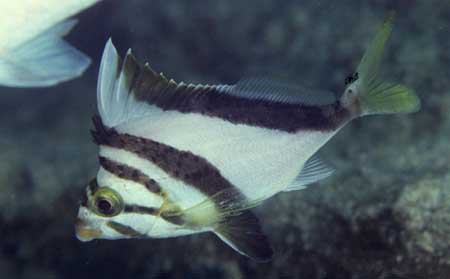 |
| Below, a morwong altercation at Midway. The bottom fish appears to be chasing the top one. Note how several of the black bands have paled near the top of the head of both fish, revealing a spotted pattern. This appears to be morwong-speak for "get out of my territory" or "leave me alone." But who knows? Perhaps it means "Come here my darling." We need more divers observing morwongs. |
|
|
|
|
